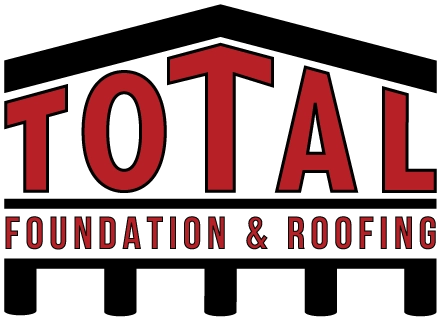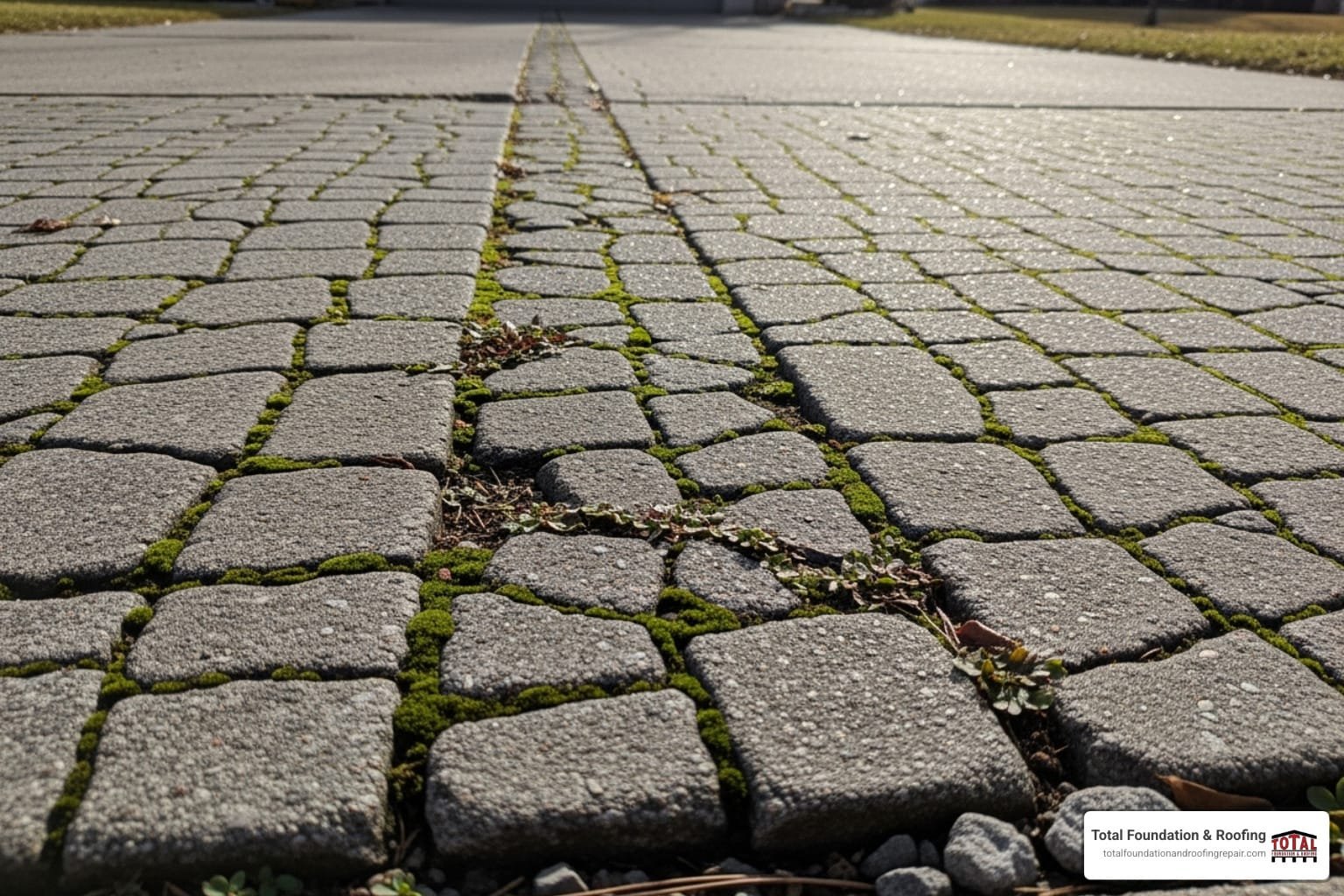Table of Contents
ToggleWhy Understanding Concrete Repair Methods Matters for Texas Homeowners
From cracked driveways and uneven sidewalks to sinking patios, concrete problems in Texas are more than just an eyesore—they represent a potential safety hazard and often signal deeper, underlying issues with the soil beneath. Understanding the most effective concrete repair methods is crucial for any homeowner looking to protect their property’s value and structural integrity. At Total Foundation & Roofing, we are dedicated to empowering homeowners with the essential knowledge to make informed decisions. This comprehensive guide will walk you through the common causes of concrete damage specific to our region and detail the best, most durable ways to fix them.
Common repair methods include:
- Crack Filling & Sealing: For minor, non-structural cracks.
- Patching: For localized damage like small holes and spalling.
- Resurfacing: For widespread cosmetic surface damage.
- Polyurethane Foam Injection: A modern method for lifting and leveling sunken slabs.
- Mudjacking: The traditional method for slab lifting.
- Complete Replacement: Reserved for severely damaged or structurally compromised concrete.
In Texas, our unique and often harsh climate presents special challenges for concrete structures. The infamous expansive clay soils swell dramatically with moisture and shrink during dry spells, creating constant movement that stresses slabs. This is compounded by intense summer heat causing thermal expansion, followed by occasional but impactful freeze-thaw cycles in winter that force moisture deep within the concrete to expand as ice. This relentless cycle means a small crack today can quickly become a major structural problem tomorrow if left unaddressed. The good news is that most issues are fixable if caught early. As Daniel Sowell, owner of Total Foundation & Roofing Repair with over 18 years of experience in the Texas Hill Country, I’ve seen how the right concrete repair methods can extend the life of your driveways, patios, and foundations by decades. My team and I are here to help you find the most effective and cost-efficient solution for your property.
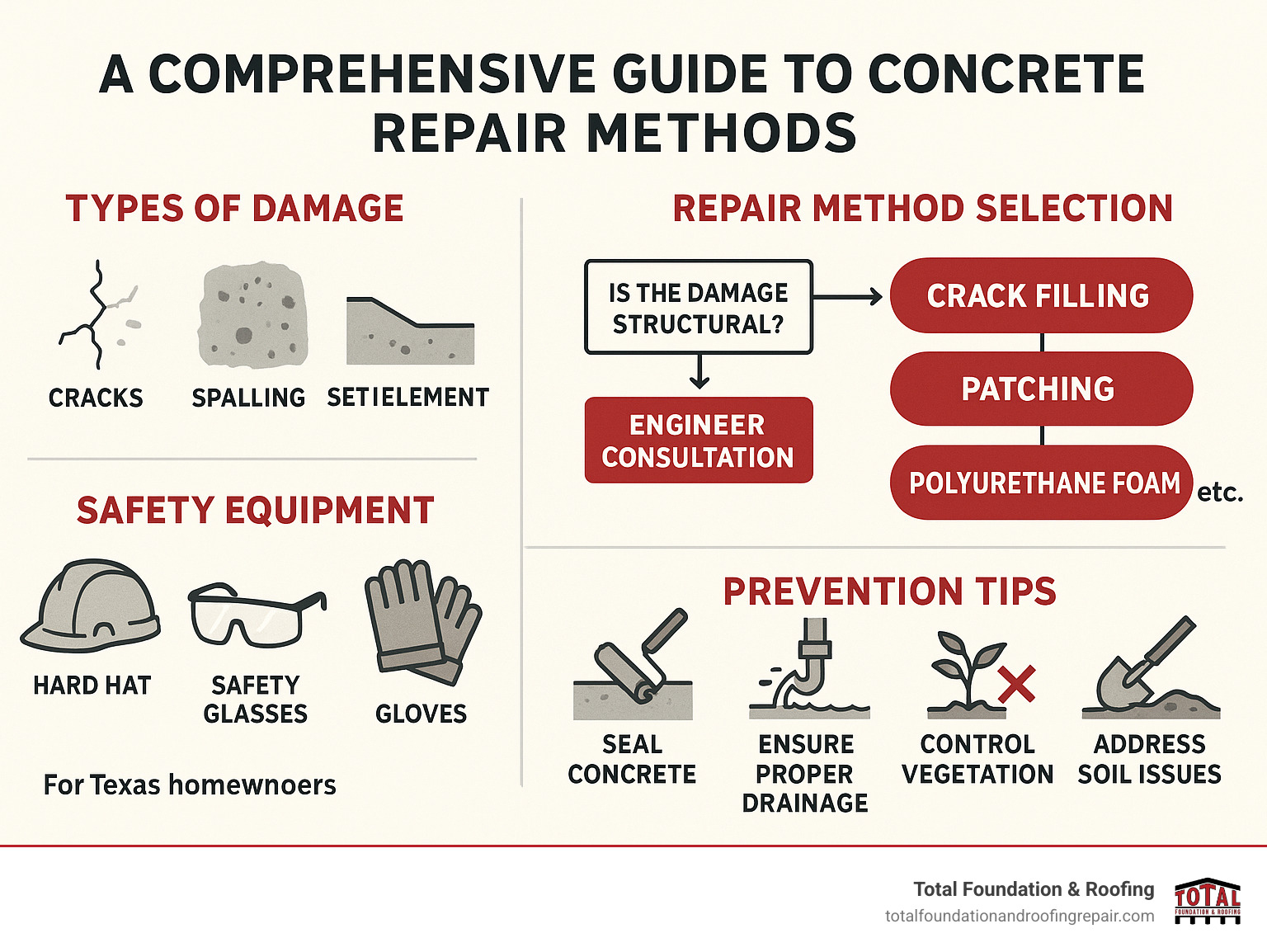
Glossary for concrete repair methods:
A Comprehensive Guide to Concrete Repair Methods
Concrete is durable, but not indestructible. Understanding why it fails is the first step to a lasting fix.
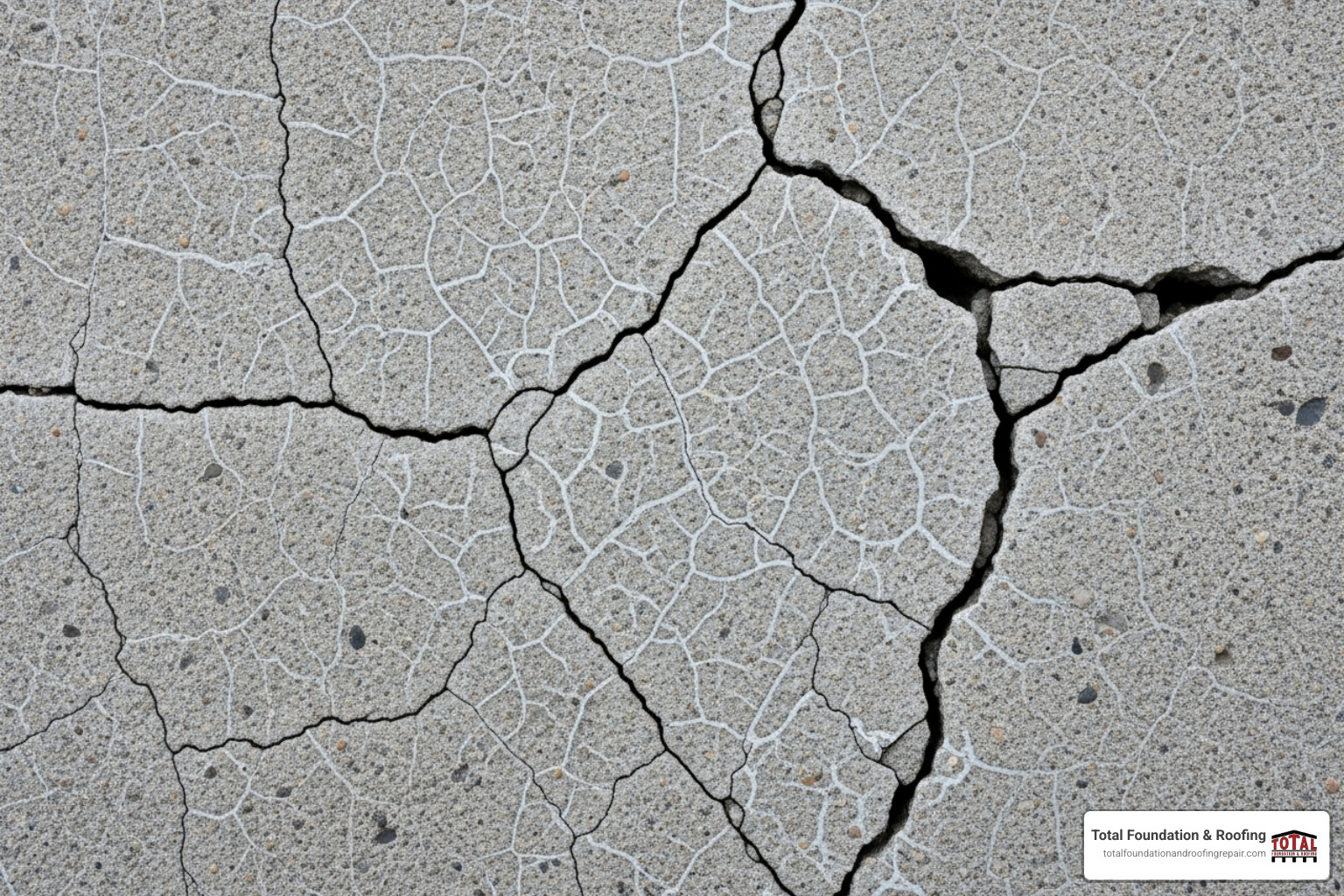
Common Concrete Problems and Their Causes
Over time, you might notice issues like cracks, spalling (flaking or chipping), or uneven slabs. These are often caused by a combination of factors, especially here in Texas:
- Water Intrusion: Water seeping into concrete can freeze and expand, causing cracks and surface damage. Beyond freeze-thaw damage, persistent water intrusion can also leach out the lime and calcium from the cement paste, a process called efflorescence, which weakens the concrete from the inside out.
- Soil Movement: The expansive clay soils in Texas are notorious for causing concrete failure. These soils act like a powerful, slow-moving sponge. When they absorb water, they can lift a slab with incredible force. When they dry out and shrink, they create voids, leaving the concrete slab unsupported and prone to cracking and sinking under its own weight.
- Heavy Loads: Parking heavy vehicles on a standard driveway can exceed its load capacity. This is especially true for driveways not engineered for heavy vehicles like large work trucks, RVs, or delivery vans, which are becoming more common.
- Improper Curing: If new concrete dries too quickly, it can weaken and crack. Curing is a chemical reaction, not just a drying process. If the water in the mix evaporates too quickly due to Texas’s high heat and wind, the concrete doesn’t achieve its designed strength, resulting in a weak, porous surface susceptible to early failure.
Recognizing these signs early is crucial. A small hairline crack is often cosmetic, but wider, uneven cracks can signal a more serious structural problem. For more info about foundation repair in our area, check out our insights on foundation repair in Kerrville, TX.
DIY vs. Professional Repair: When to Call for Help
While small cosmetic fixes like filling a hairline crack can be a DIY project, more significant issues require professional expertise. You should call a professional for:
- Large or growing cracks (wider than 1/4 inch).
- Uneven or sunken concrete slabs that create a trip hazard.
- Water leaking through foundation cracks.
- Widespread spalling or crumbling.
Attempting to fix major structural problems yourself can lead to further damage and higher costs down the road. Furthermore, professionals have access to commercial-grade materials and specialized equipment—like high-pressure injection pumps or industrial grinders—that are far superior to the products available at a local hardware store. Attempting a major repair without the right tools and knowledge can lead to a fix that fails quickly, wasting both time and money and potentially making the original problem worse. For these complex issues, seeking professional help is the safest and most effective solution. We have the expertise to diagnose the root cause and apply the most effective, long-lasting solution.
A Homeowner’s Guide to Common Concrete Repair Methods
Let’s get into the nitty-gritty of the most common concrete repair methods we employ and recommend. Each method is suited for specific types of damage, so choosing wisely is key to a lasting fix.
1. Crack Filling & Sealing
This is one of the most common concrete repair methods for addressing non-structural cracks. The goal is to prevent water, debris, and insects from entering the crack, which can exacerbate damage, especially during freeze-thaw cycles.
- Materials: We use high-grade epoxy fillers for static (non-moving) cracks and flexible polyurethane sealants for active (moving) cracks to accommodate expansion and contraction.
- Technique: Proper preparation is paramount. Before any filler is applied, the crack must be carefully cleaned of all dust, debris, and loose concrete using a wire brush and compressed air. For a more effective seal, we often enlarge the crack using a concrete saw or chisel to create a reservoir. This allows for better penetration and adhesion of the sealant, ensuring it bonds directly to the solid concrete for a durable, watertight seal.
2. Patching
Patching is one of the essential concrete repair methods for fixing localized damage like spalling, small holes, or chipped surfaces. For a long-lasting patch, we ensure proper surface preparation. This often involves using a chisel or saw to square off the edges of the damaged area, a technique known as undercutting. This creates a mechanical ‘key’ that locks the patch material in place, preventing it from popping out under stress. We use polymer-modified mortars that contain polymers to improve adhesion, flexibility, and durability.
3. Resurfacing & Overlays
When your concrete surface is showing widespread cosmetic issues like crazing or scaling, but the underlying slab is structurally sound, resurfacing can give it a fresh new look. This is a cosmetic fix, not a structural one. This method also offers a fantastic opportunity to update the aesthetic of your concrete. Overlays can be stamped, stained, or colored to mimic stone, brick, or tile, providing a complete visual change at a fraction of the cost of replacement. For a deeper dive, check out this comprehensive Guide To Concrete Repair And Resurfacing.
Understanding the costs associated with these repairs is also important. You can learn more about Foundation Crack Repair Cost to help you budget for potential projects.
Advanced Concrete Repair Methods for Sunken Slabs
When concrete slabs—be it your driveway, patio, or sidewalk—start to sink or become uneven, it’s usually a sign of soil instability beneath. For these issues, we turn to specialized concrete repair methods that lift and stabilize the slab.
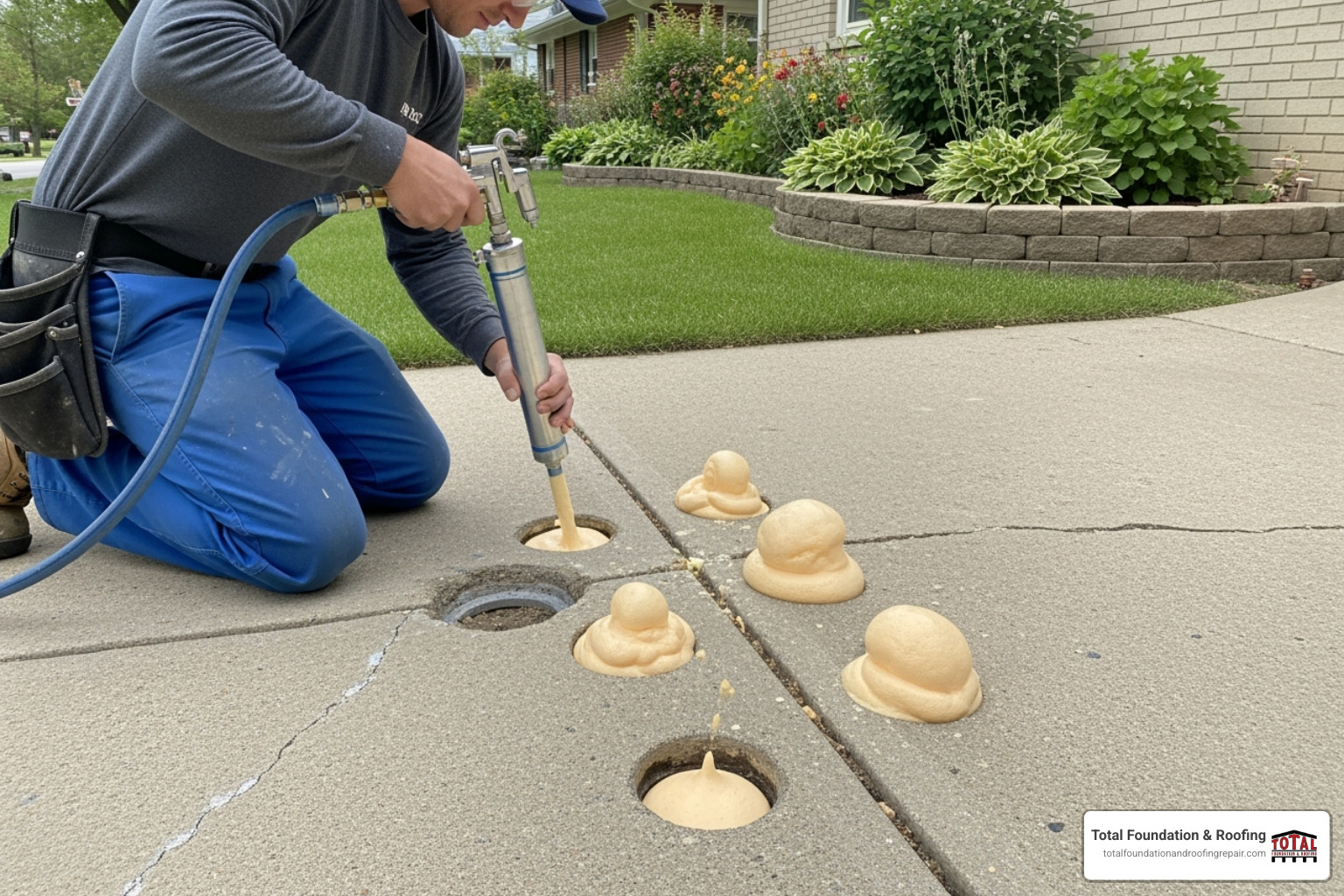
1. Polyurethane Foam Injection (Slabjacking)
This is our preferred modern method for lifting and leveling sunken concrete. It’s a fast, efficient, and minimally invasive alternative to traditional methods.
- How it Works: We drill small, dime-sized holes into the slab and inject a high-density polyurethane foam. The foam expands, filling voids and gently raising the concrete back to its original position.
- Advantages: This process is fast, minimally invasive, and the foam is lightweight, so it doesn’t add extra stress to the soil. The area is often ready for use within an hour. A key, long-term benefit of polyurethane foam is that it is hydrophobic—it repels and displaces water. Once injected, it forms a solid, waterproof barrier that not only lifts the slab but also stabilizes the soil beneath by preventing future water intrusion into the newly filled voids. This directly addresses one of the primary causes of slab settlement.
2. Mudjacking (Traditional Slabjacking)
Mudjacking is an older method that involves pumping a slurry of mud, sand, and cement under the slab to lift it.
- Disadvantages: This method requires larger holes, the material is heavy, and it can take days to cure. The weight of the slurry can sometimes contribute to future settlement, and the organic material in the slurry can break down or wash away over time.
Comparison: Polyurethane Foam Injection vs. Mudjacking
| Feature | Polyurethane Foam Injection | Mudjacking |
|---|---|---|
| Drill Hole Size | Small (dime-sized) | Large (1-2 inches) |
| Material | High-density polyurethane foam | Cement-based slurry |
| Weight | Lightweight (2-4 lbs/cu. ft.) | Heavy (100-110 lbs/cu. ft.) |
| Cure Time | Fast (usable in 15-30 minutes) | Slow (24-48 hours) |
| Intrusiveness | Minimal | More disruptive |
| Durability | Excellent, waterproof, non-shrinking | Can shrink or wash out over time |
For a more detailed look at this process, see our guide on Concrete Leveling with Foam Injection.
Ensuring the Longevity of Your Concrete
We’ve covered a lot of ground, from understanding why concrete cracks and sinks to exploring the many concrete repair methods available. The most important takeaway is that addressing concrete damage promptly isn’t just about aesthetics—it’s about protecting your home’s value and safety.
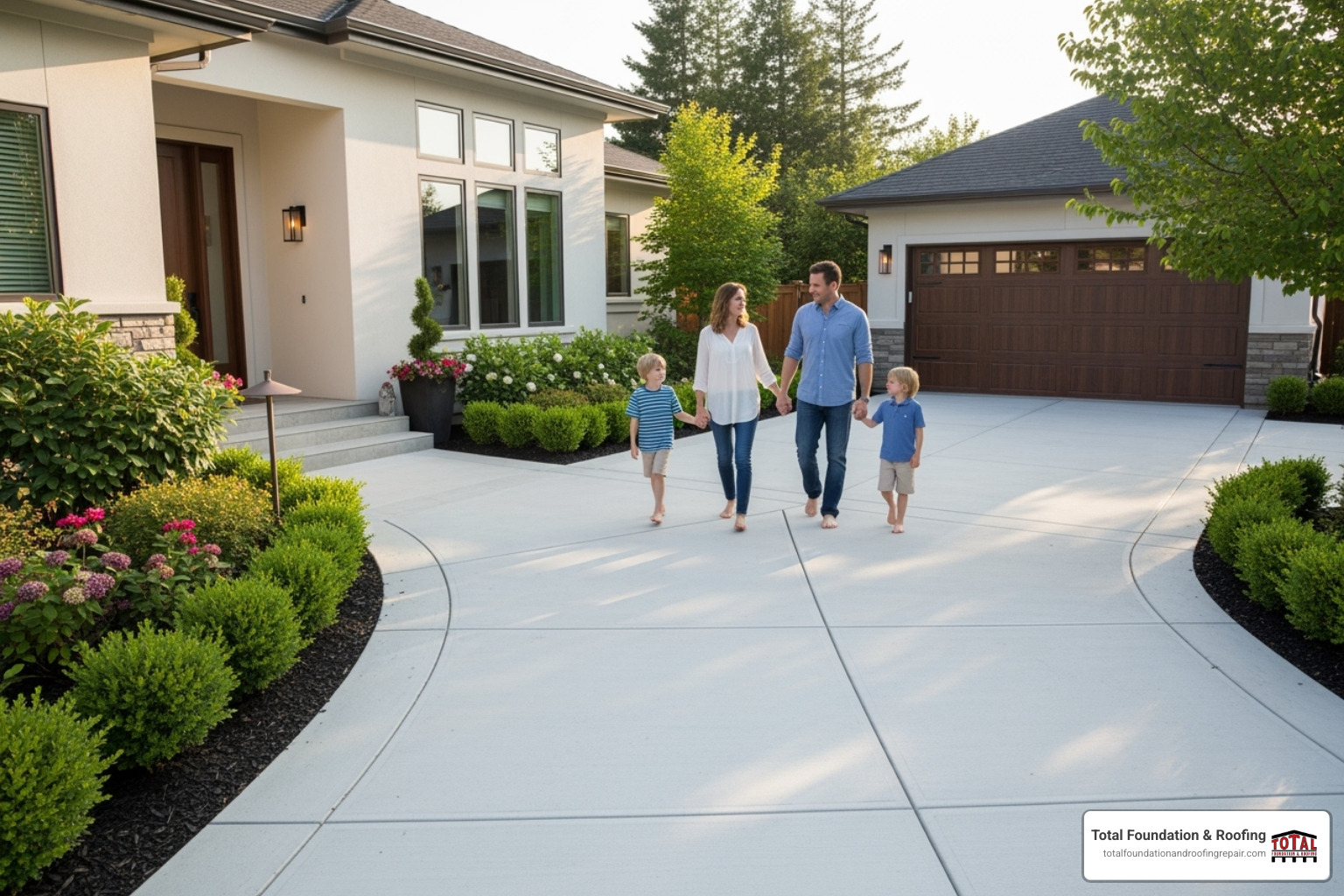
Think of concrete repair like going to the dentist. A small cavity is easy and inexpensive to fix, but ignoring it long enough can lead to more complex and costly procedures. The same principle applies to that hairline crack in your driveway or that slightly sunken section of your patio.
Key Benefits of Timely Concrete Repair:
- Improved Safety: Eliminates trip hazards from uneven sidewalks and driveways.
- Cost Savings: Prevents minor issues from escalating into costly replacements.
- Maintained Property Value: A well-maintained driveway, smooth sidewalks, and level patios create a great first impression and boost curb appeal.
- Prevents Water Damage and Pest Infestations: Cracks and gaps in your concrete, especially near your foundation, can channel water towards your home, leading to moisture issues. These voids also create ideal homes for pests like ants, termites, and rodents. Sealing cracks and lifting slabs eliminates these pathways.
- Structural Integrity: For foundations and load-bearing slabs, timely repairs are absolutely critical. A sinking driveway or patio can alter drainage patterns, causing water to pool against your home’s foundation. This constant moisture can lead to foundation damage, a far more complex and expensive problem to solve. Maintaining level concrete surfaces around your home is a key part of protecting the stability of the entire structure.
Here in the Texas Hill Country, our unique local conditions create special challenges for concrete. Our expansive clay soils, occasional freeze-thaw cycles, and intense summer heat mean that not all concrete repair methods work equally well. What works in another climate might fail miserably here.
That’s where deep experience with local conditions becomes invaluable. At Total Foundation & Roofing, we’ve spent years observing and repairing how concrete behaves in the specific environment of the Texas Hill Country. We don’t apply one-size-fits-all solutions. We understand which polymer-modified mortars can withstand the heat, which polyurethane sealants remain flexible during soil shifts, and which lifting techniques provide permanent stability against our notorious clay soil. Our expertise is in choosing the right method and material for your specific problem, ensuring a lasting solution, not just a temporary patch.
The success of any concrete repair hinges on an accurate diagnosis of the root cause. Simply patching a crack caused by a sinking slab is a temporary fix doomed to fail. This is why a professional assessment is so important. We can determine if the issue is cosmetic, a result of water intrusion, or a symptom of soil instability, allowing us to recommend the most effective and cost-efficient concrete repair methods to solve the problem for good.
For a lasting solution to uneven or sunken concrete, our professional Concrete Leveling services can get your surfaces back to level and safe. We’re ready to help you protect your investment and keep your concrete looking and performing its best for years to come. Concrete problems rarely fix themselves, and they almost always get worse with time. The sooner you address them, the easier and less expensive the solution will be.
